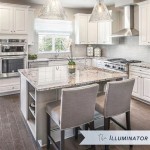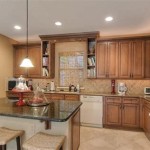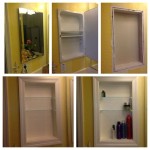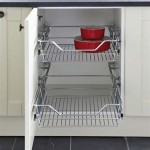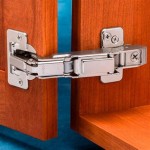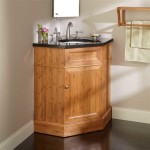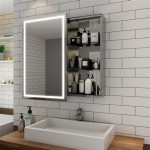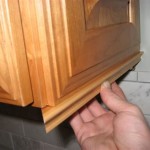Achieving The Perfect Look With Plywood Cabinet Doors And Windows
Plywood, a versatile and cost-effective engineered wood product, has long been a staple in construction. Its layered construction provides strength and stability, making it suitable for various applications, from structural elements to decorative finishes. While often associated with utilitarian purposes, plywood can be reimagined to achieve a refined and aesthetically pleasing look, particularly when used for cabinet doors and windows. The key lies in understanding the different types of plywood, employing appropriate techniques for preparation and finishing, and selecting hardware that complements the overall design. This article explores the nuances of using plywood to create sophisticated and durable cabinet doors and windows, focusing on achieving a high-quality finish and overcoming common challenges.
The inherent appeal of plywood lies in its affordability and availability. Compared to solid wood, plywood offers a significantly lower price point, allowing for budget-conscious renovations and new construction projects. Furthermore, its widespread availability ensures a consistent supply, regardless of geographical location. However, the visible edges and layered construction of plywood require careful consideration and specific techniques to achieve a polished and professional result. Neglecting these aspects can result in a finished product that appears unfinished or even amateurish. Therefore, proper edge banding, filling imperfections, and selecting the appropriate veneer grade are crucial steps in elevating plywood from a basic building material to a design feature.
Selecting the Right Type of Plywood
The first step in achieving the perfect look with plywood cabinet doors and windows is selecting the appropriate type of plywood. Plywood is available in various grades, thicknesses, and core constructions, each with its own set of characteristics and suitability for specific applications. For cabinet doors and windows, it is generally recommended to use hardwood plywood, which features a hardwood veneer on the face and back, offering a smoother and more aesthetically pleasing surface compared to softwood plywood. Common hardwood veneers include birch, maple, oak, and cherry, each providing a distinct grain pattern and color variation. The choice of veneer should align with the overall design aesthetic of the space and the desired finish.
Beyond the veneer species, the grade of the plywood is a critical factor. Plywood grades are typically denoted by letters, such as A, B, C, and D, representing the quality of the veneer. A-grade plywood has a smooth, virtually flawless surface, while lower grades may contain knots, patches, and other imperfections. For cabinet doors and windows, A-grade or B-grade plywood is generally recommended, as these grades require minimal preparation and offer a superior surface for painting, staining, or veneering. It is important to note that the grade applies to both the face and the back of the plywood, so pay attention to both when making a selection.
The core construction of plywood also plays a significant role in its performance and stability. Common core types include veneer core, particleboard core, and MDF (medium-density fiberboard) core. Veneer core plywood consists of multiple layers of wood veneer glued together, offering excellent strength and screw-holding ability. Particleboard core plywood features a core made of compressed wood particles, providing a smooth and stable surface but with lower screw-holding strength compared to veneer core. MDF core plywood offers a very smooth and uniform surface, making it ideal for painting, but it is also more susceptible to moisture damage. For cabinet doors and windows that will be exposed to moisture, veneer core plywood is generally the preferred choice due to its superior water resistance and durability.
Preparing Plywood for a Flawless Finish
Once the appropriate type of plywood has been selected, proper preparation is essential to achieve a flawless finish. This involves addressing any imperfections in the surface, smoothing the edges, and creating a suitable base for the chosen finish. The first step is to inspect the plywood for any knots, voids, or other irregularities. These imperfections should be filled with wood filler, ensuring that the filler is compatible with the chosen finish. After the filler has dried completely, it should be sanded smooth, blending it seamlessly with the surrounding surface.
Edge banding is a crucial step in concealing the exposed edges of the plywood and creating a professional-looking finish. Edge banding is typically applied using iron-on veneer tape or wood strips glued to the edges. Iron-on veneer tape is a convenient and affordable option, but it may not be as durable as wood strips. Wood strips, on the other hand, offer a more robust and customizable solution, allowing for a wider range of edge profiles and finishes. Regardless of the chosen method, it is important to carefully trim and sand the edge banding to create a smooth and seamless transition between the plywood surface and the edge.
Sanding is a critical step in preparing plywood for a finish. The surface should be sanded progressively, starting with a coarser grit sandpaper (e.g., 120-grit) to remove any imperfections and then moving to finer grits (e.g., 180-grit and 220-grit) to create a smooth and polished surface. It is important to sand in the direction of the wood grain to avoid creating scratches. For plywood with a highly figured veneer, hand sanding may be necessary to avoid damaging the delicate grain pattern. After sanding, the surface should be thoroughly cleaned to remove any dust or debris, ensuring a clean and smooth base for the finish.
Achieving the Desired Aesthetic with Paint, Stain, or Veneer
The final step in achieving the perfect look with plywood cabinet doors and windows is applying the chosen finish. The finish not only protects the plywood from moisture and wear but also contributes significantly to the overall aesthetic of the space. Common finishing options include painting, staining, and veneering, each offering a unique set of advantages and disadvantages.
Painting is a versatile and cost-effective option for finishing plywood cabinet doors and windows. It allows for a wide range of color choices and can be easily customized to match the existing décor. When painting plywood, it is important to first apply a primer to seal the surface and ensure proper adhesion of the paint. The primer should be sanded lightly between coats to create a smooth and even base. Two or more coats of paint should be applied, allowing each coat to dry completely before applying the next. High-quality paints designed for cabinets and trim are recommended for durability and longevity.
Staining is another popular option for finishing plywood, allowing the natural grain of the wood to show through. Staining can enhance the beauty of the veneer and create a warm and inviting atmosphere. When staining plywood, it is important to choose a stain that is compatible with the type of wood veneer. A wood conditioner should be applied before staining to ensure even penetration of the stain and prevent blotching. The stain should be applied in thin coats, wiping off any excess stain with a clean cloth. A clear topcoat should be applied to protect the stained surface from moisture and wear.
Veneering is a more advanced finishing technique that involves applying a thin layer of solid wood veneer to the plywood surface. Veneering can create the look of solid wood at a fraction of the cost. However, veneering requires specialized tools and techniques, and it is generally recommended for experienced woodworkers. The veneer should be carefully selected to match the desired grain pattern and color. It should be glued to the plywood surface using a veneer press or vacuum press. After the glue has dried completely, the veneer should be sanded smooth and finished with a clear topcoat.
Selecting appropriate hardware such as hinges, handles, and knobs, is essential for completing the look of plywood cabinet doors and windows. The hardware should complement the overall design aesthetic and be chosen for its functionality and durability.

Modern Durable Plywood Kitchen Cabinets Built To Last

Diy Shaker Cabinet Door Tutorial Step By Guide

A Comprehensive Guide To Kitchen Cabinet Door Styles Fabrizio Bath

Kitchen Cabinet Door Trends You Ll See In 2024

Diy Fluted Cabinet Doors Jenna Sue Design

How To Find The Best Kitchen Cabinets Forbes Home

Melamine Cabinets In Modern Homes Oppolia

Extending Kitchen Cabinets Up To The Ceiling Thrifty Decor Diy And Organizing

How To Paint Kitchen Cabinets Forbes Home

How To Choose The Right Router Bit For Your Cabinet Doors
Related Posts

